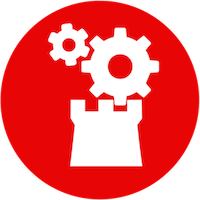Migrating IBM Quickr
For the last eighteen months or so we’ve been engaged in a project to provide two things for a client:
- Migrate multiple IBM Quickr places to our platform, and;
- Develop a new web application to replace IBM Quickr, both for the migrated content, and for new places as required.
This is not an insignificant piece of work: Quickr was a content management platform that had a lot of investment from Lotus and IBM at various points, and it was around for a long time. Furthermore, once we had won the work and we were in the throes of advanced planning, we were also looking to undertake a massive re-write of the entire Via migration utility.
A re-write? Really??
Those who have been with us for a while will recall the web-based migration tool – still available on our site – which provides an excellent demonstration for part of what our platform does. However, if you are serious about bulk-migrating data: multi-NSF applications, mapping security fields, custom content, driving through schema changes and the like, then it’s our Java-based migration utility you need.
When we started to build Via over five years ago, we embarked upon an ambitious development programme: not only would we code the API layer, we would also build migration tooling ready for day one. This was admirable but misguided, because the upshot was that we were building direct-to-MongoDB migration code alongside the abstraction layer of our API. In short, the migration utility did not use our own API, which was clearly undesirable for all manner of reasons.
Opting to re-work the migration utility was therefore The Right Thing To Do. We simply had to mitigate that technical debt, take a deep (collective) breath and crack on. The Quickr migration project clearly underlined the need for a flexible, speedy migration path.
Almost every piece of code in the migration utility has been re-designed and re-written. We have multiple “importer” classes which can handle selection criteria at the form, document, view, database, directory and, of course, Quickr level. A “bootstrap” class orchestrates the import process, and handles everything from dynamic configuration loading to dealing with different types of directories for migrating user profiles too. We can even merge multiple Quickr places into one.
Want to know more? Fancy migrating from Quickr, or even Domino.Doc? (Yes, that too!) Drop us a line.
